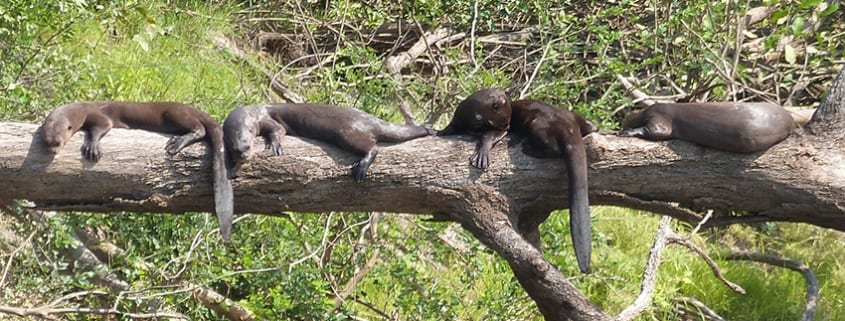Urgent Efforts Underway to Protect Unique Habitat in Brazil
Rainforest Trust only needs to raise the last one-third of funding to support the purchase of 596 acres as a first-of-its kind project in Brazil’s unique Cerrado habitat!
As a major tributary of the Amazon, Brazil’s Araguaia River traverses one of the most unique landscapes of the world. It literally divides two biomes: Amazon flooded forest on one side and the Cerrado, or tropical savannah, on the other. At the convergence of this ecotone, Rainforest Trust is helping its local partner Instituto Araguaia 593 acres of pristine Cerrado that backs up to the river and connects with protected areas of the flooded forest, including Cantão State Park, where Instituto Araguaia operates.
“Every single protected area in the Cerrado is [in the rocky uplands]. There is no protection in the lowlands because of agricultural development potential,” Co-founder of Instituto Araguaia George Georgiadis said in a presentation at Rainforest Trust headquarters.
Despite the uniqueness of this region, the Cerrado is the most threatened habitat in Brazil. Recognizing this, Rainforest Trust encouraged its partner to explore how this habitat is crucial for the survival of threatened species. Luckily, Ornithologist Tulio Dornas felt confident that the soon-to-be purchased parcel would be home to the rare Endangered Kaempfer’s Woodpecker, which was once thought extinct.
Dornas found several pairs of Kaempfer’s Woodpeckers in bamboo stands on the property, demonstrating its critical importance as a protected area for a rare species dependent on a highly specific habitat. But the property has other conservation benefits as well, including being an important habitat for the Endangered Giant Otter, who has a den along the property’s riverbank; limited to no logging, an impressive feat considering the amount of hardwoods there; and a wildlife corridor for passage between the flooded forest and the Cerrado.
Unfortunately, these ecological benefits are often outweighed by agricultural pursuits, as the land is very valuable to farmers. It is possible to etch out three crops a year (two soybean and one corn) in some areas of the Cerrado with help from irrigation, making it one of the highest yielding biomes of the world for this profitable crop. Which is exactly why it is also the most threatened habitat in Brazil, even more than the Amazon rainforest. As the second largest habitat of Brazil, taking up 21 percent of the land, nearly 80 percent of it has been destroyed for agricultural developments. However, it gets little conservation attention, despite its uniqueness and importance, with approximately only 2 percent protected.
“We decided to focus our efforts as conservationists as preventative, before soy sweeps through the region like a hurricane,” Silvana Campello, Co-founder of Instituto Araguaia, said in the presentation.
Soy production is the number one agricultural product from the region. Not only do soy producers deforest and burn the Cerrado, but they also use immense amounts of a pesticide that further destroys the land and pollutes the waterways, Campello said. Understanding how these behaviors could have serious impacts on the Cantão State Park, Instituto Araguaia with the help of Rainforest Trust decided to create a secure conservation corridor around the park that could help safeguard the protected area.
Using satellite imaging to determine where the most pristine swaths of Cerrado remain, Instituto Araguaia aspires to establish a corridor of protection. Hoping to convince private landowners that “conservation is good and necessary, and important for issues like climate change,” Campello said they are spreading the word about the benefits of setting up private reserves. In addition to the clear benefits to wildlife, in Brazil, private reserves are treated much like parks, and provide tax benefits for the landowner as well. Since private reserves are irreversible in perpetuity by federal law, they want this new protected area to be
“a seed to persuade as many people as we can to set up private reserves,” Georgiadis said.
For more information or if you are interested in helping protect Cerrado habitat, please visit our project page here.




